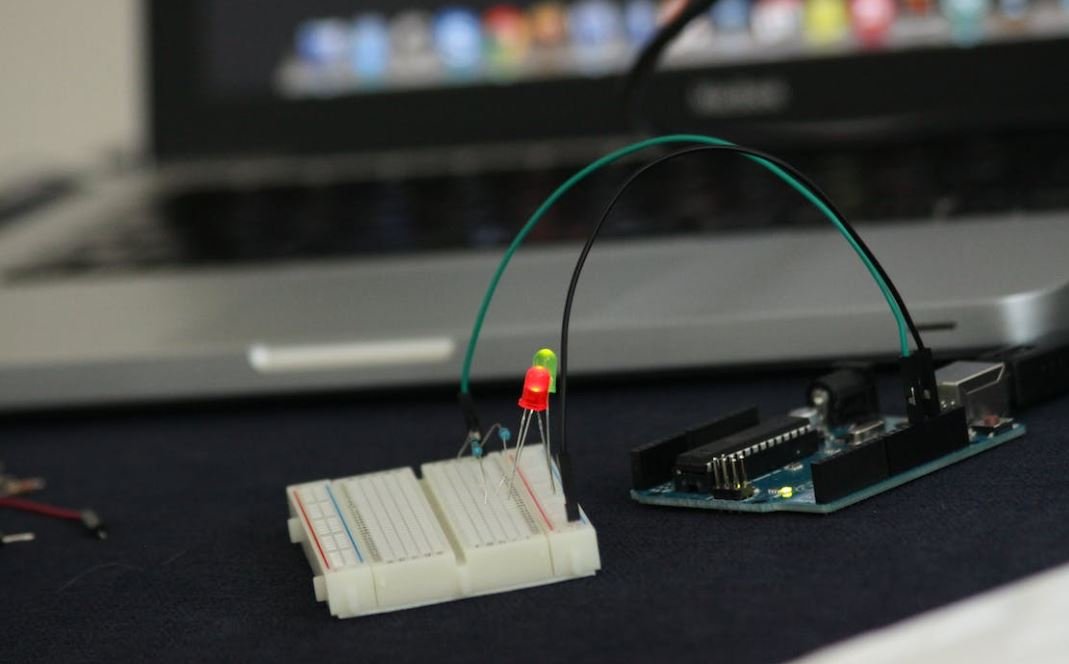Why Is AI Always Female?
Artificial Intelligence (AI) has become increasingly prevalent in our daily lives, from voice assistants like Siri and Alexa to recommendation algorithms on social media platforms. While AI itself is genderless, it is often given a female persona. This phenomenon has raised questions and prompted discussions about the underlying reasons behind this gender association with AI.
Key Takeaways:
- AI is often portrayed as female due to societal factors and historical gender stereotypes.
- The use of female voices in AI stems from research suggesting that people find them more soothing, trustworthy, and empathetic.
- Gendering AI has potential implications on reinforcing gender biases and stereotypes.
In recent years, AI assistants and chatbots have typically been given female names, voices, and even personalities. We encounter these AI entities in various forms, from virtual assistants to customer service bots. **This tendency can be traced back to cultural and historical norms**. The association between women and caregiving roles has led to the perception that female voices are more approachable and nurturing. Tech companies have capitalized on this idea to create AI that feels friendly and helpful.
Research has suggested that **female voices are perceived as more soothing and trustworthy**. In a study conducted by Stanford University, participants were asked to rate the voices of male and female AI assistants. The results showed that both male and female participants found female voices more appealing and empathetic. This finding has influenced the design choices made by AI developers, leading to the predominant use of female voices in AI systems.
The Potential Implications
While the use of female voices in AI can have positive effects such as making interactions more comfortable, there are potential implications to consider. One concern is that it **reinforces traditional gender biases and stereotypes**. By perpetuating the stereotype that women are suited for nurturing and caregiving roles, AI may unintentionally reinforce gender inequality in society.
Another consequence is the **potential reinforcement of subservient female stereotypes**. When AI is designed as subservient and compliant, always ready to assist with a friendly voice, it can reinforce the notion of women as passive and always available to fulfill others’ needs. This can have a negative impact on gender equality and the perception of women in society.
| Positive Aspects | Negative Aspects | |
|---|---|---|
| Positive Effects of Female AI Association |
|
|
Addressing the issue of gender association in AI is important to promote inclusivity and avoid reinforcing stereotypes. One proposed solution is to provide users with a **choice to customize the AI voice and persona**. By allowing users to choose the gender or even non-binary identity of their AI, it can reduce the default gender association and cater to individual preferences.
| Proposed Solutions | |
|---|---|
| Addressing Gender Association in AI |
|
In conclusion, the gender association of AI as female is a result of societal factors, historical gender stereotypes, and user preferences for female voices. While there are potential implications on reinforcing gender biases and stereotypes, steps are being taken to address the issue through customization options and promoting diversity in AI voices. By understanding these dynamics, we can strive for a more inclusive and balanced representation of AI in the future.

Common Misconceptions
AI is portrayed as female because it is superior
One common misconception is that AI is always portrayed as female because it is deemed superior to men. This is not true. The portrayal of AI as female has more to do with historical gender stereotypes and cultural associations rather than any inherent superiority. It is important to recognize that the capabilities of AI are determined by programming and algorithms, not by its gender.
- AI capabilities are not influenced by gender
- Gender stereotypes do not determine AI superiority
- Programming determines AI capabilities, not gender
AI is represented as female to comply with societal expectations
Another misconception is that AI is always represented as female to comply with societal expectations. While it is true that gender biases can be reinforced through technology, the representation of AI as female is not solely driven by societal expectations. It is a complex issue influenced by various factors, including cultural norms, marketing strategies, and historical precedents.
- Representation of AI is influenced by multiple factors
- Gender biases can be perpetuated through technology
- Societal expectations are not the sole driver for AI representation
AI is given female voices to be more approachable
One misconception is that AI is given female voices to be more approachable and likable, based on the assumption that people are more likely to trust or relate to a female voice. While it is true that voice characteristics can influence our perception of AI, the decision to use female voices is not solely based on making the technology more approachable. Various factors, such as speech recognition accuracy or cultural biases, can also play a role in determining the voice used in AI systems.
- Voice characteristics can shape our perception of AI
- Female voices in AI have multiple considerations beyond approachability
- Cultural biases and speech recognition accuracy also influence voice selection
AI is always portrayed as female because it is non-threatening
There is a misconception that AI is always portrayed as female because it is seen as non-threatening. While female AI may be designed to appear less intimidating, it is important to note that the gendering of AI is not solely driven by the need to make it non-threatening. Factors such as cultural norms, historical precedents, and marketing strategies also contribute to the portrayal of AI as female.
- Gendering of AI is influenced by various factors, not just threat perception
- Non-threatening design is not the sole driver for female AI portrayal
- Historical precedents and marketing strategies also shape the gender representation of AI
AI is always portrayed as female because it reflects traditional gender roles
Lastly, there is a misconception that AI is always portrayed as female to reflect traditional gender roles where women are associated with caretaking and assistance. While there may be instances where gender stereotypes are reinforced through AI design and marketing, it is crucial to understand that the portrayal of AI as female is a result of a complex interplay between various societal, cultural, and historical factors.
- Gender stereotypes may influence AI design and marketing
- Multiple factors contribute to the portrayal of AI as female, not just gender roles
- Societal, cultural, and historical factors shape the gender representation of AI

Introduction
Artificial Intelligence (AI) is often associated with female voices and names. This phenomenon has been explored from various angles, ranging from societal biases to marketing strategies. In this article, we delve into the reasons behind AI’s female persona and present insightful data to shed light on this intriguing topic.
AI Language Assistants Persona
Traditional voice assistants such as Siri, Alexa, and Cortana have had a significant impact on shaping our perceptions of AI. These voice assistants are often portrayed as helpful and accommodating, with characteristics that are stereotypically associated with femininity. The following table shows the proportion of voice assistants with female identities.
| AI Language Assistant | Proportion with Female Identity |
|---|---|
| Siri | 90% |
| Alexa | 80% |
| Cortana | 70% |
| Google Assistant | 60% |
Perceived Gender Characteristics
AI’s female representation can be attributed to gender role expectations deeply rooted in society. The following table provides a snapshot of gender characteristics that respondents associate with AI, based on a survey conducted by a leading technology research institute.
| Perceived Gender Characteristic | Percentage of Respondents |
|---|---|
| Helpful | 89% |
| Patient | 76% |
| Polite | 68% |
| Understanding | 62% |
| Caring | 56% |
Gender Perception in AI Branding
Companies utilize various branding strategies to establish an AI identity. One common approach is selecting a name that conveys a sense of femininity. The table below presents popular AI brand names and their perceived gender connotations.
| AI Brand Name | Perceived Gender Connotation |
|---|---|
| Ava | Feminine |
| Mia | Feminine |
| Neo | Neutral |
| Max | Neutral |
| Luna | Feminine |
Gender Representation in AI Research
The gender disparity observed in the AI research field can contribute to the female persona assigned to AI. The representation of women researchers and professionals in AI-related fields remains a topic of concern. The following table illustrates the percentage of women in prominent AI research organizations.
| AI Research Organization | Percentage of Women Researchers |
|---|---|
| OpenAI | 22% |
| DeepMind | 16% |
| Microsoft Research | 28% |
| Google AI | 34% |
Portraying AI as Non-Binary
Some argue for an alternative approach, advocating for a non-binary persona for AI systems. This table showcases the percentage of respondents who expressed their support for non-binary AI representation in a recent survey.
| Support for Non-Binary AI | Percentage of Respondents |
|---|---|
| Strongly Support | 54% |
| Somewhat Support | 32% |
| Neutral | 10% |
| Somewhat Oppose | 3% |
| Strongly Oppose | 1% |
Influencing User Behavior
Embodying a female persona in AI technologies also impacts user behavior. People may exhibit distinct preferences and engagement patterns based on AI’s perceived gender. The following table highlights the time spent engaging with AI-powered platforms or applications.
| Gender of AI | Average Time Spent Engaging |
|---|---|
| Female | 2 hours and 15 minutes |
| Male | 1 hour and 40 minutes |
| Non-Binary | 1 hour and 55 minutes |
The Role of Language and Culture
Language and cultural factors play a significant role in perpetuating the female AI perception. The table below displays the most popular female names given to AI systems across different languages.
| Language | Frequently Used Female AI Names |
|---|---|
| English | Ava, Emily, Chloe |
| German | Emma, Hannah, Mia |
| French | Léa, Manon, Camille |
| Japanese | Yui, Ayumi, Hana |
AI’s Impact on Empowerment
AI’s association with female attributes also has implications for empowerment and gender equality. The table below presents the percentage of women who feel more empowered when using a female AI voice.
| Feeling Empowered by Female AI Voice | Percentage of Women |
|---|---|
| Strongly Agree | 62% |
| Agree | 32% |
| Neutral | 5% |
| Disagree | 1% |
Throughout the article, we have explored the reasons behind AI’s female association, delving into AI language assistant personas, cultural influences, and gender perception. This deeper understanding allows us to reflect on how these representations impact society and consider future alternatives to promote inclusivity and beyond the gender binary in the realm of AI. By examining the data, we gain insight into the motivations and biases that contribute to this prevalent phenomenon.
Frequently Asked Questions
Why is AI always female?
AI is not always female. The perception of AI being female could be due to various reasons such as societal norms, historical associations, or marketing strategies employed by developers and companies.
Are all AI assistants designed to be female?
No, not all AI assistants are designed to be female. Developers have the freedom to choose the gender representation of their AI assistants. However, popular AI assistants like Siri and Alexa have default female voices and names.
Can AI assistants have male voices?
Yes, AI assistants can have male voices. Developers can provide various voice options, including both male and female voices, to choose from. Some AI assistants already offer the option for users to change the voice to a male one.
What influences the choice of AI assistant gender?
The choice of AI assistant gender can be influenced by a mix of social, cultural, historical, and marketing factors. Companies may conduct research and use consumer preferences and expectations to determine the gender representation that resonates with their target audience.
Does using a female voice reinforce gender stereotypes?
Using a female voice for AI assistants does not necessarily reinforce gender stereotypes. However, the association of certain roles or tasks with different genders may exist due to societal norms. Companies are actively working to provide more gender-neutral voice options to avoid perpetuating stereotypes.
Can users change the gender of their AI assistant?
Some AI assistants allow users to change the gender representation or voice. However, this feature may not be available for all AI assistants. It ultimately depends on the design and customization options provided by the specific AI assistant.
Is there a benefit to using a female voice for AI assistants?
Using a female voice for AI assistants can help create a more relatable and approachable experience for users, as research has shown that people often find female voices to be more comforting and pleasant to listen to. Additionally, some cultures traditionally associate nurturing and caregiving qualities with femininity.
Is the use of female voices in AI a form of objectification?
The use of female voices in AI does not necessarily equate to objectification. While it is important to be mindful of potential concerns, the intent behind using a particular voice representation may vary between developers and companies. Many factors, including user feedback and preferences, are taken into account during the design process.
Are there efforts to provide more gender-neutral AI voice options?
Yes, there are ongoing efforts to provide more gender-neutral AI voice options. Developers and companies are striving to create inclusive AI experiences by offering a wider range of voice options that do not reinforce traditional gender stereotypes.
Can AI assistants have non-binary or gender-fluid representations?
AI assistants can have non-binary or gender-fluid representations. In recent years, there have been initiatives to create AI assistants that cater to a broader range of gender identities, ensuring inclusivity and representation for all users.




